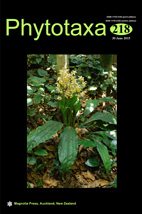Abstract
Stachys virgata, a rare Greek member of S. subsect. Rectae, was hitherto known from historical collections made in the north-eastern and southern parts of Peloponnisos, the last one dated in 1844. Its only recent record, on Poros Island in 1940, is not supported by a herbarium specimen. The species was rediscovered in 2005, 161 years after its last collection, and subsequently documented in 18 populations (1 of them now extinct) distributed along the eastern slopes of Mt. Parnonas and Mt. Madara in east Peloponnisos. We review the species’ description and distribution based on both historical records and recent collections, select a specimen deposited in the Natural History Museum, Paris (P) as a lectotype, and count its chromosome number, 2n = 34, for the first time. We evaluate the species’ taxonomic relationships and consider its threats and conservation status based on our own field work and several years of monitoring. S. virgata totals 355 mature plants and 12 out of its 18 populations comprise 20 plants or fewer. Based on the IUCN criteria, S. virgata falls under the Endangered (EN) category and specific conservation measures are proposed. Finally, we provide a key distinguishing S. virgata from the other Greek members of S. subsect. Rectae.

